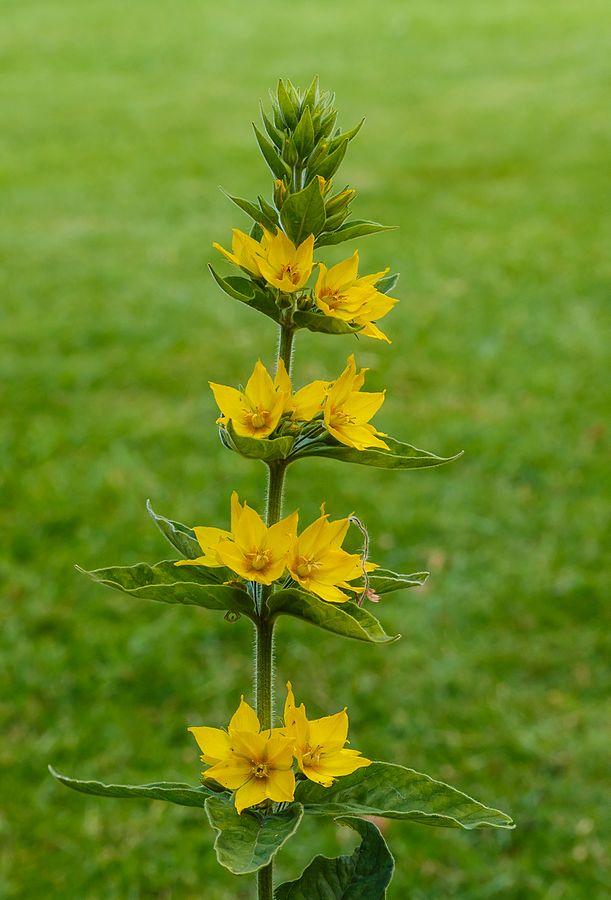Yellow Loosestrife

Yellow Loosestrife
(Lysimachia punctata)
Priority: - Prevent / EDRR
Tags: Terrestrial
Identification and Reproduction
Identification:
- Yellow loosestrife, also known as spotted loosestrife, is a herbaceous perennial that has escaped gardens and shown invasive characteristics.
- Despite its common name it is in the primrose family rather than the true loosestrife (Lythrum) family.
- Stems grow stiff, covered in soft hairs and upright up to 1.2 m tall.
- Leaves are found in whorls of 3 or 4 and are ovate to lance-shaped.
- It produces cup-shaped bright yellow flowers in the axils of leaves. They have 5 petals and have a long blooming season, from May to September.
Reproduction:
- Since it is a cultivar species it is difficult to reproduce by seed. In rare, optimal growing conditions it can self-seed.
- Yellow loosestrife will spread through rhizomes.
- Plants are easily regrown from divided root fragments.
Habitat & Ecology
- It often takes over wastelands, ditches, roadsides and other disturbed sites.
- This plant prefers full or partial shade.
- It thrives and spreads quickly in moist fertile soil.
Impacts
Ecological:
- Can form dense monocultures that will out-compete and out-crowd native plants.
Management
Prevention is a high priority for this plant.
- Refrain from growing this plant in your garden. If it is planted ensure that it is bordered with edging to prevent unwanted spread.
- If found in flower arrangements let dry and then place in compost.
Mechanical/Manual Control:
- Because of its rhizomatic root system, repeated treatments will need to take place over several years.
- Careful hand-pulling and digging is recommended. Ensure that all parts of the plants are removed off site to prevent regrowth.
Resources
For more identification and historic information check out the GLANSIS's datapage for Lysimachia punctata.
The ISCBC also has a useful and detailed factsheet with more information.
Header photo (Tim Green).



